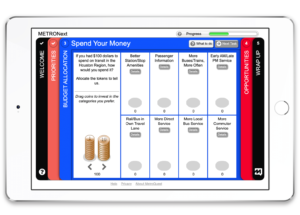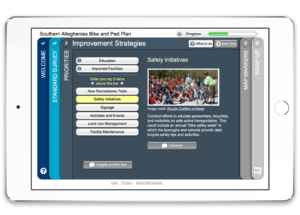How Great Survey Design Helps Inform and Engage Thousands
![How_Great_Survey_Design_Helps_Inform_and_Engage_Thousands_805x366 [TIPS] How Great Survey Design Helps Inform and Engage Thousands](https://metroquest.com/wp-content/uploads/How_Great_Survey_Design_Helps_Inform_and_Engage_Thousands_805x366.png)
When agencies seek input from the public, their engagement goals typically include any or all of the following: engage a critical mass of participants, collect input from a diverse group, gather informed public input and receive quantifiable results for improved decision making and greater public support.
Without the right tools and techniques, however, planners often end up collecting uninformed input, especially at public meetings. It’s common to receive feedback from only the most motivated members in their community and to feel unable to educate the public about complex planning topics and choices. This year has also limited in-person outreach options, adding new challenges to the public engagement landscape.
The good news is that using online surveys with simple design features can help you overcome these challenges and meet your public engagement goals. Today, let’s explore six survey design tips that help planners inform and engage thousands online.
Tip #1: Keep it short.
Design surveys that take participants only a few minutes to complete! Each MetroQuest survey contains five screens. Why is five the magic number? Decades of experience tells us that participation drops off drastically if an online survey is longer than 5 to 10 minutes.
Once you start to push the 5-to-10-minute experience boundary, you tend to get lower participation and less accurate data as participants are likely to experience survey fatigue. While it may be tempting to cram a lot of information into a long list of questions, people’s attentions spans are short.
Tip #2: Be as visual as possible.
Reading is, plainly out, boring and consumes a lot of a participant’s time. Incorporate visuals into your online survey that can convey the same meaning, enhancing the online experience and enticing more individuals to participate. To learn more, read our blog about the benefits of incorporating images.
Tip #3: Make it fun and compelling.
Avoid standard survey questions that are tedious and time consuming; instead, gamify the experience so that participants have a more enjoyable time providing feedback for your planning project. For example, MetroQuest’s budget allocation game is a great way to solicit feedback about where to allocate resources in a way that makes it fun for the participant!
The more enjoyable the survey experience is, the more participants will be to complete it and share it with others, helping you gather input from people who you might not have been able to reach otherwise.
Tip #4: Gather both qualitative and quantitative data.
Ask questions that can be answered with a ranking or rating to quickly gather qualitative data, but also allow participants to provide comments and optional, written feedback where appropriate to receive qualitative data as well. This gives you the ability to compare your results and obtain data-driven insights that are easy to understand.
Tip #5: Educate participants.
Oftentimes, the planning topic at hand is complex, making education a critical component of the survey. Inform participants about the project, choices and tradeoffs before soliciting feedback and collecting data. Instead of a lengthy explanation, embed short descriptions throughout.
For example, you can start by providing participants with some background information about the project to help provide insight into the intent behind the study. Throughout the survey, build on that context to illustrate the choices and tradeoffs that that are part of the planning process.
Tip #6: Make it compatible on a wide range of devices.
Online surveys are a very convenient approach for soliciting public input as they are accessible at any time. In addition, more and more people across demographics have access to the internet! To increase participation and accessibility, make the survey available on as many channels as possible. A great mobile experience is increasingly important for online surveys, as up to 75% of participants will use their mobile phones. You can also put the survey on library computers, set up mobile kiosks and many other types of devices, to allow the greatest range of participation.
To learn more about great survey design and how it can help you engage thousands and collect meaningful data, watch our on-demand webinar: The Art & Science of Effective Online Surveys for Planning.
The Art & Science of Effective Online Surveys for Planning
What makes an effective online survey for public engagement? Join expert Dave Biggs as he drills down into the elements of a great survey from content to promotion to data!


